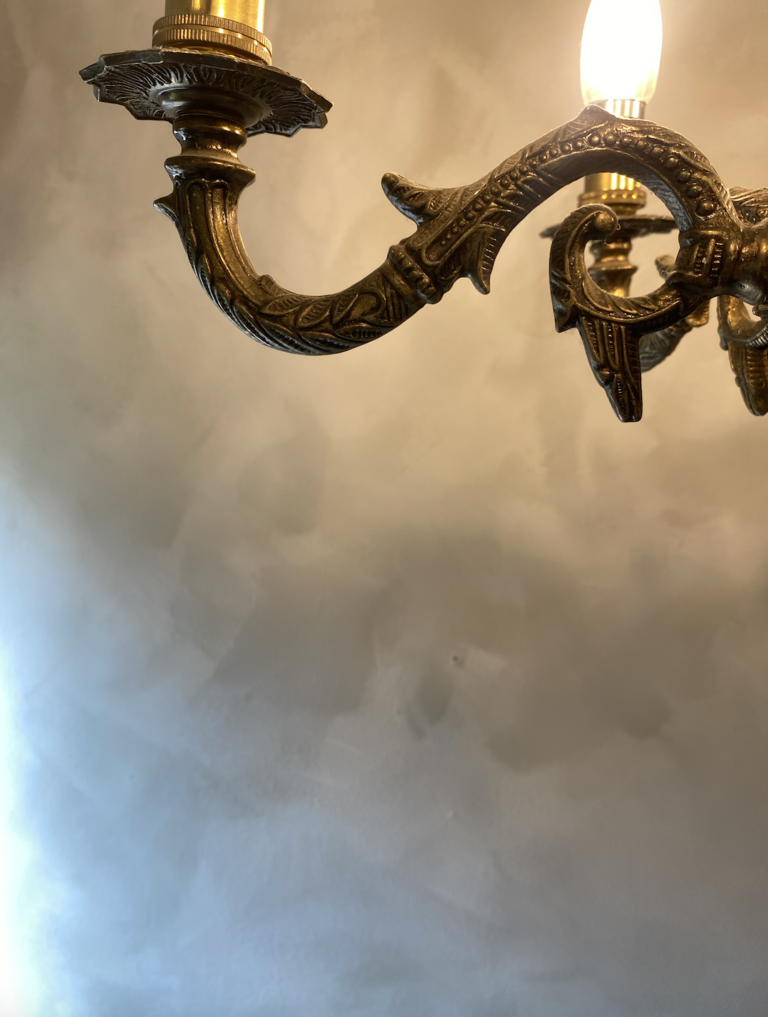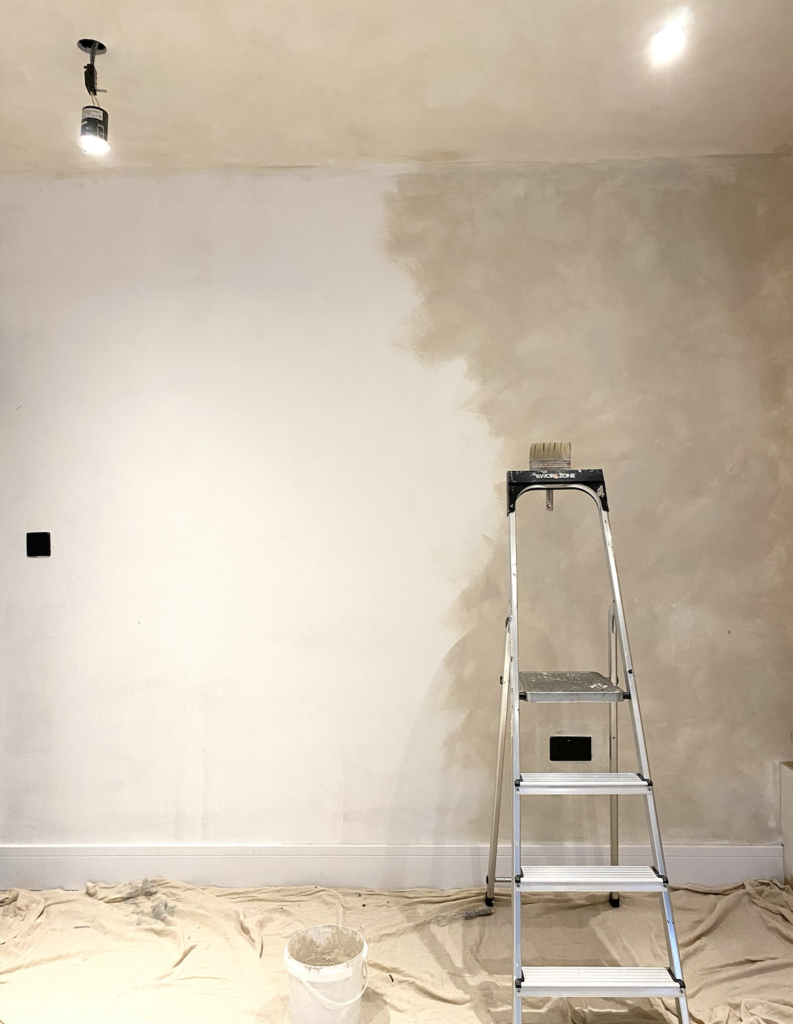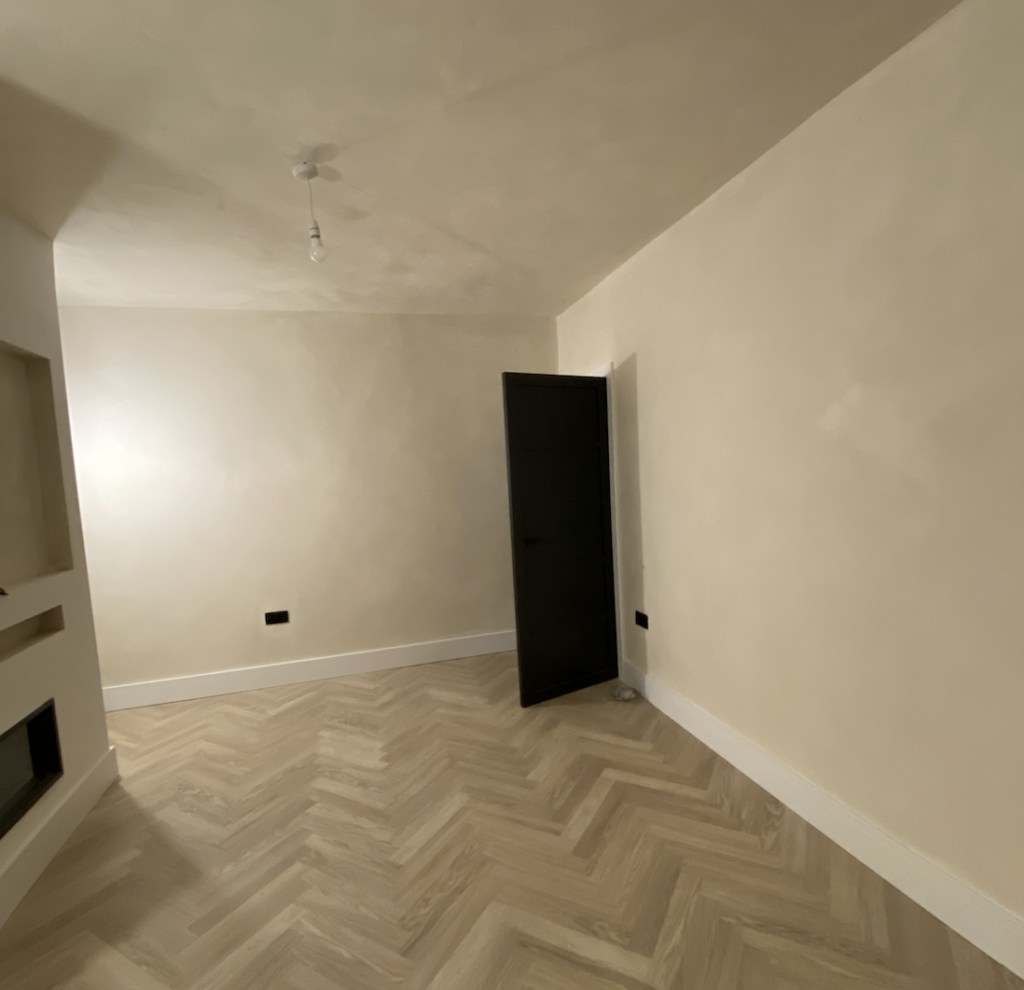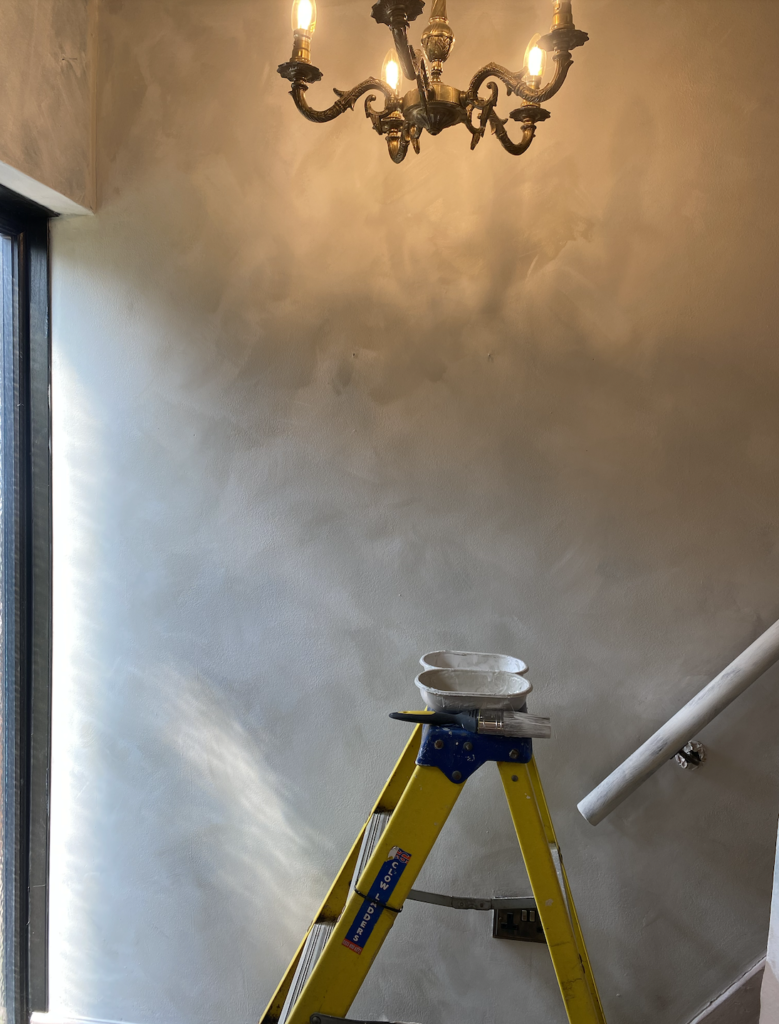When it comes to Limewash should you get the real deal or fake it with the faux limewash technique?
Limewash vs. Faux Limewash: What’s the Difference?
Limewash paint has become a go-to option for homeowners looking to achieve a textured, natural finish with ‘old-world’ charm. Its rustic, matte appearance has a unique depth and movement that can transform an ordinary wall into an interesting canvas that oozes rich history from even the most modern of buildings.
To book a paint service please email with your requirements.

But what if you want the limewash look without the commitment to its traditional application? Or perhaps the room isn’t suitable to a paint that cannot be scrubbed clean such as high-traffic areas or bathrooms..
That’s where faux limewash techniques come in—using two tones of emulsion paint to mimic the effect of real limewash. In this post, we’ll break down the pros and cons of each option to help you decide which technique is best for your space.

What is Limewash Paint?
Limewash is a traditional paint made from crushed limestone that has been fired and mixed with water. It creates a breathable, organic coating on surfaces, often used in older homes or buildings because of its authenticity and environmental friendliness.
Pros of Real Limewash Paint
- Natural and Eco-Friendly
Limewash is made from all-natural materials, making it an excellent choice for those looking to use eco-friendly products. The paint is VOC-free and highly breathable, allowing moisture to evaporate, which can help prevent mold growth. - Authentic, Aged Look
Limewash naturally weathers over time, giving your walls an authentic, soft patina that adds character. Each coat of limewash gives walls an irregular, cloud-like texture that no synthetic product can truly replicate. - Highly Breathable
Limewash is perfect for older buildings with porous surfaces like plaster, brick, and stone. Its breathability prevents trapped moisture, which can damage the underlying structure. - Antibacterial and Non-Toxic
Limewash has natural antibacterial properties, and because it doesn’t contain harmful chemicals, it’s a good option for people sensitive to toxins in paints.
Cons of Real Limewash Paint
- Requires a Porous Surface
Limewash must be applied on porous surfaces like raw plaster, brick, or stone. It won’t adhere properly to non-porous surfaces like drywall or previously painted walls without special preparation. - Requires Multiple Coats
Limewash often needs several coats for an even, lasting finish. It can also become streaky if not applied correctly, especially when dealing with dark or uneven surfaces. - Fades Over Time
One of limewash’s most charming aspects—its natural aging—can also be seen as a downside for those who prefer a more durable, long-lasting finish. It fades and weathers, especially when exposed to the elements outdoors. - Limited Colour Options
Limewash paint comes in a more limited range of colours, typically soft, earthy tones. Bright, bold colours are harder to achieve with this natural medium.

What is Faux Limewash?
Faux limewash is a painting technique that uses two tones of emulsion paint to mimic the texture and depth of real limewash. This method allows for greater flexibility in terms of surface preparation and colour choice while still giving a similar textured, layered effect.
Pros of Faux Limewash Technique
- Works on Any Surface
Unlike real limewash, faux limewash can be applied on any surface, including drywall, previously painted walls, or even non-porous materials. This makes it more versatile for modern homes. - Durable and Long-Lasting
Faux limewash doesn’t fade or weather as much as real limewash, making it a more durable option for high-traffic areas or rooms that require a finish with more longevity. - More Colour Options
With faux limewash, you can use a wider variety of colours. By mixing two tones of emulsion paint, you can create a wide array of custom hues, ranging from soft neutrals to bolder shades. - Easier to Apply
The faux limewash technique is typically easier to apply than real limewash and often requires fewer coats. Homeowners can achieve a limewash-inspired look without the labour-intensive application process.

Cons of Faux Limewash Technique
- Lacks True Authenticity
While faux limewash can mimic the look of limewash, it doesn’t have the same organic texture or patina that develops over time with real limewash. It’s a good imitation but will never have the full depth or historical accuracy of traditional limewash. - Less Breathable
Unlike real limewash, which is highly breathable, faux limewash is as breathable as the emulsion paint it’s made from. This means it won’t offer the same benefits for older buildings that require moisture control. - Can Be Difficult to Perfect
Faux limewash requires blending and layering to get the look right. Without proper technique, the finish can end up looking patchy or too “contrived” if not done with care. Achieving a natural look may require practice or a professional touch. - Lacks Antibacterial Properties
Since faux limewash is essentially emulsion paint, it does not have the antibacterial and anti-mold properties that limewash naturally offers.
Limewash vs. Faux Limewash: Which is Right for You?
When deciding between real limewash and faux limewash all you really need to do is consider your specific needs and the character of your home.
- Choose real limewash if you’re working with a historic property or surfaces like brick and stone, and you want a timeless, organic finish that weathers beautifully over time. It’s an ideal choice for those who value sustainability and prefer using natural, non-toxic materials.
- Opt for faux limewash if you’re looking for a versatile, durable option that can be applied on any surface and allows for more colour flexibility. Faux limewash can be a great choice for modern homes, offering a similar aesthetic with less maintenance and greater durability.
Ultimately, both options offer unique benefits, but your choice will depend on the look you’re trying to achieve and the demands of your space.
Whichever you decide, make sure you properly prep your surfaces & don’t panic after the first coat – it’s meant to look like that!

Made it this far? Good work! Subscribe to my mailing list to get the monthly round-up direct to your inbox every month or if you love what you read leave me a comment and share with your network!




